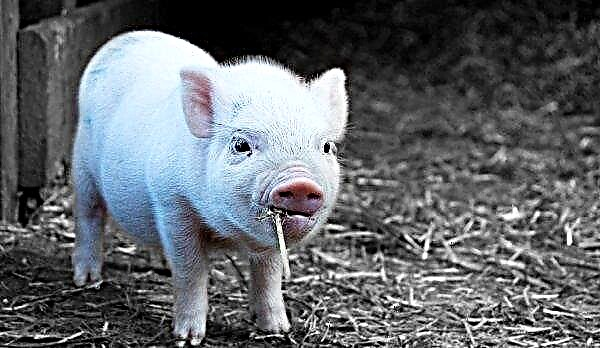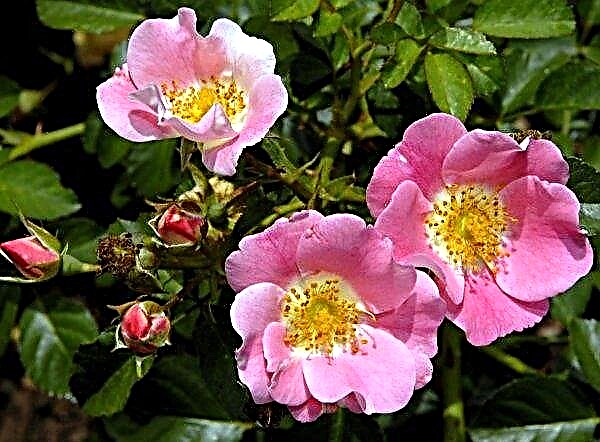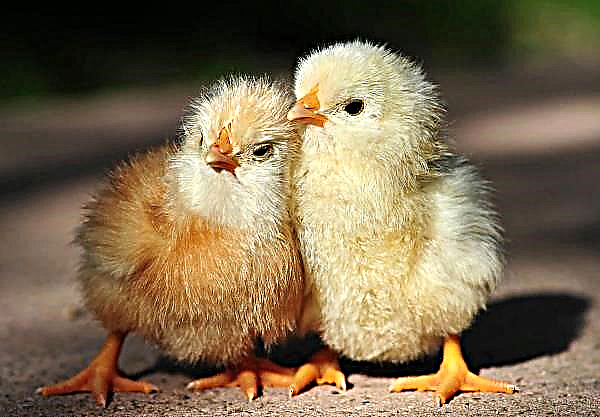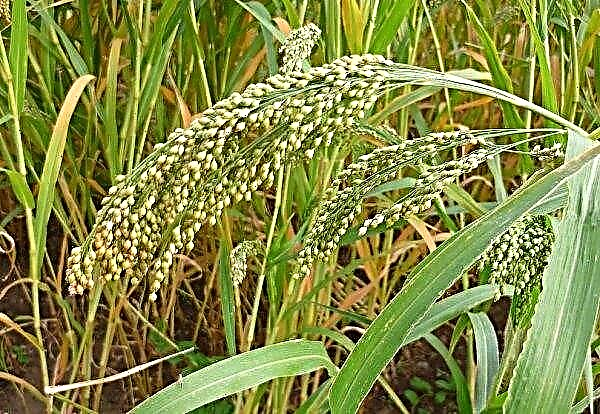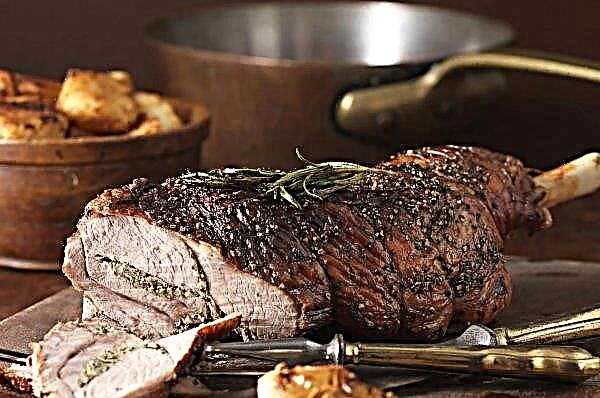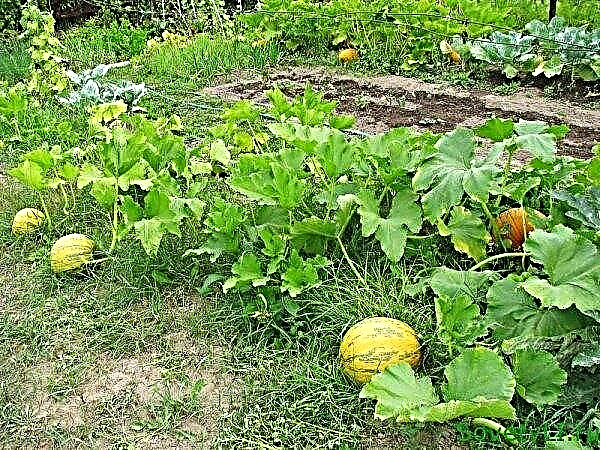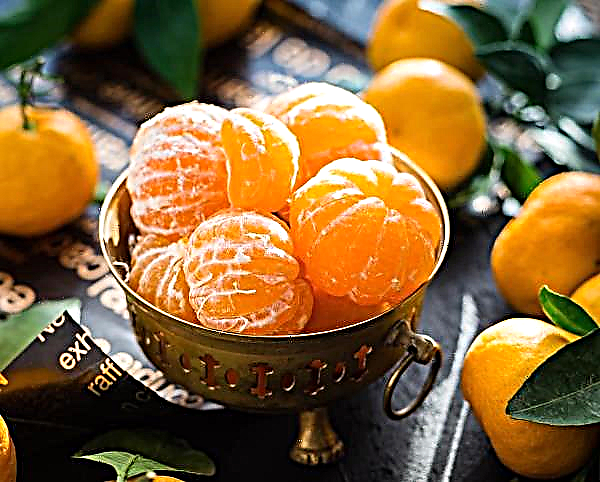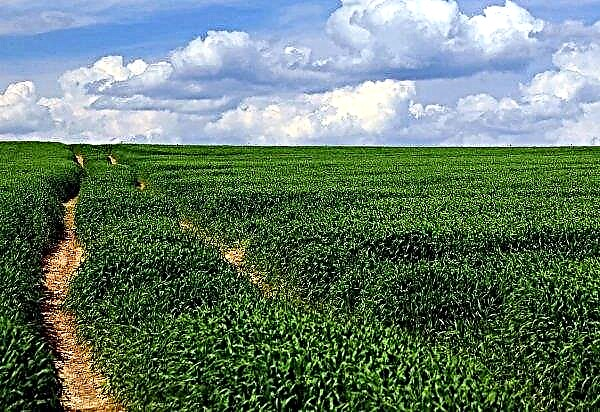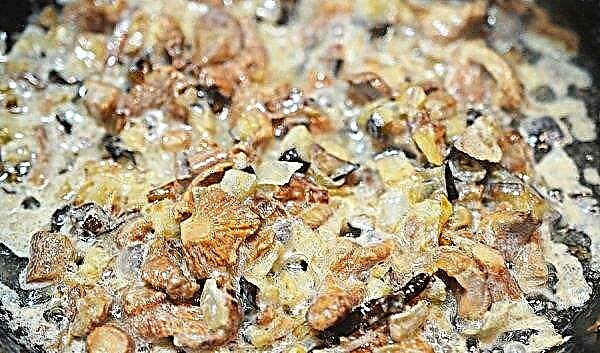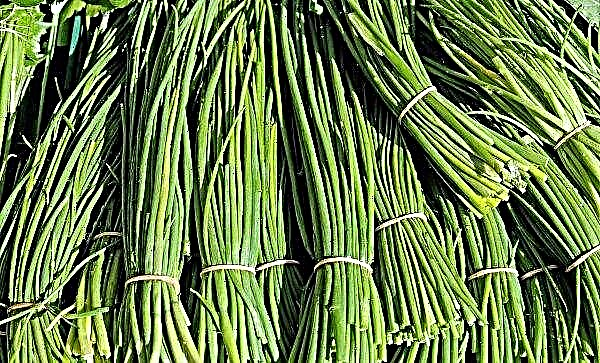Most varieties of hydrangea have long been successfully grown in our country. The plant tolerates severe frosts and drought not too long. One of these varieties is Levana. This is a beautiful shrub with a compact but lush crown. Its flowers are saturated white and formed into large inflorescences. A guarantee of success in cultivation is the planting of plants in acidic or acidified soils. The culture gratefully responds to top dressing and regular watering, giving the owner unrivaled beauty on the site.
Grade description
Hydrangea Levana is a variety belonging to the paniculate species of plants, highly regarded among gardeners for its decorative and sweet honey aroma that fills the garden space in summer.
If the panicled shrub receives the necessary and timely care, it can grow up to 2.5–3 m in height. The crown of the plant is distinguished by the density of the shoots, while maintaining a compact outline. White and creamy white flowers cover the bush abundantly.
The main feature of the plant is enlarged flowers. Their size ranges from 5 to 6 cm. This is at least 2 times larger than that of similar varieties.
The bush is not afraid of sudden gusts of wind. Even with severe weather, it retains its shape, so the shrub does not need a garter or the creation of additional supports. For successful plant growth in a personal plot, it is enough to carry out timely top dressing and watering. In this case, Levan hydrangea will please the eye in summer with large inflorescences and a pleasant aroma.
Did you know? In the Buddhist religion, there is a very important holiday during which the birth of the Buddha is celebrated. On this day, temples are decorated with hydrangea flowers.
Features of hydrangea cultivation
According to gardeners, the variety tolerates winter cold. Therefore, in most cases, an ornamental plant does not need to be covered. Pruning is carried out annually. Manipulation should be carried out selectively, as the flowers are formed on the shoots that appeared in the past or this season. In order for the plant to bloom profusely, it is recommended to get rid of two-thirds of the branches. This technique is practiced only with plants that have reached 5 years or more.
The rules for leaving and planting practically do not differ from similar methods used for other varieties. The only important point is the need for constant watering, since hydrangea does not tolerate the absence of moisture. Drainage should also be laid. In the southern regions of the country, it is recommended to water the bushes with a small amount of water every day. It is possible to ensure the preservation of moisture in the area by loosening and mulching the soil.
Video: Hydrangea Levan in the garden
The right choice of site for planting hydrangea ensures a quick start to growth. Vegetation of the plant is impossible without additional acidification of the soil. So that the open ground does not lose its properties during the growth period of the culture, it is recommended to periodically add citric or oxalic acid, vinegar. Planting in soil with excessive lime content is not allowed.
Landing and care
Levana variety is practically no different from other varieties of hydrangea in agricultural technology. Nevertheless, attention should be focused on the following aspects:
- Site selection at the site for planting seedlings.
- Regular, but not excessive watering.
- The introduction of mineral and organic fertilizers.
- Rational pruning of shrubs.

Selection and preparation of the landing site
For Levana variety, well-lit areas are best suited. However, the plant may remain in the shade for some time throughout the day.
When choosing a location, it is recommended to follow the following general rules:
- At the place where the flower will be planted, the sun should be present no more than 6 hours a day. The rest of the time the bush should be in partial shade from buildings or trees.
- On the estate it is better to choose a southern or southeastern location.
- Constant exposure to wind or the presence of draft will negatively affect the growth of hydrangea. Therefore, you should choose a section of the garden where there is additional protection. It can be any building, a number of other shrubs or trees, a fence.
Important! Acidified soil at a selected location can be created artificially. For this, it is proposed to use special colloidal sulfur for gardening.
Landing rules
The shrub is preferably planted in a light and fertile soil.
To create it on your site, you will need to mix a strictly defined number of components, namely:
- sheet land - 2 servings;
- sand - 1 portion;
- humus - 2 servings;
- peat - 1 serving.
The planting algorithm should be followed:
- Dig a recess with a diameter and depth of 50 cm.
- Pour water (2-3 liters).
- Mix the soil components indicated above and fall asleep in the recess.
- Put a seedling in the center, fall asleep to the root neck.
- Watered with 1 bucket of water.
- Create a layer of mulch from natural materials. It can be needles, peat or compost. He is left under the bush throughout the summer.

Watering and feeding
Hydrangea cultivar Levan is very hygrophilous. Therefore, it is necessary to strictly observe the rules of watering the plant.
It is recommended to perform this process in accordance with the following rules so that the flower culture can fully grow:
- With a sufficient amount of natural moisture, the bush is watered 1 time per month.
- If there is little rainfall, watering should be carried out at least 1 time in 7 days.
- With prolonged drought, water is added 2 or more times a week.
 For a single irrigation, use from 15 to 20 liters of fluid under one adult shrub. If the seedling is not too mature, then 5 liters of water is enough
For a single irrigation, use from 15 to 20 liters of fluid under one adult shrub. If the seedling is not too mature, then 5 liters of water is enough
Top dressing is applied 1 time per month. For its implementation, it is necessary to strictly observe the time frame:
- At the beginning of the season. Usually this is the month of April. Use nitrogen-containing mineral or organic fertilizers.
- June and July months. They are fed with fertilizers containing potassium and phosphorus. It is recommended to make at a time when buds begin to form on the bush.
- End of august. Potash or phosphorus fertilizers are allowed. In this case, the Levan variety will continue to bloom until the end of September. From this time, feeding is no longer carried out.
Important! Since hydrangea grows plentifully, a distance of 1.5 m should be observed between the individual bushes during planting.
Pruning
Trimming the shrub every year. Otherwise, it will be very thickened and lose its attractive appearance.
Pruning is carried out several times a year in compliance with the following standards:
- In March. At this time, the juice will not actively circulate in the plant. It is customary to remove branches damaged after wintering and those that spoil the appearance of the plant. Thin out the thick part of the crown. Remove shoots growing to the sides or inwards. At the same time, 2-3 kidneys are left on them.
- During bud formation. With this cleaning, weak, thin branches are removed. In this case, the remaining ones will bloom much more abundantly.
- In the fall, before a stable cooling. Remove shoots spoiling the appearance of the bush.
 It should be remembered that pruning a bush involves shortening the branches so that they have a maximum of 5 healthy buds
It should be remembered that pruning a bush involves shortening the branches so that they have a maximum of 5 healthy buds
Winter preparations
First of all, remove all the inflorescences remaining on the bush. Since hydrangea painlessly tolerates even severe frosts, which often occur in the northern regions of our country, there are no special methods of preparation for the cold season. But the most experienced and scrupulous plant growers use mulching - up to 7 cm of peat or sawdust are poured into the root zone. Approximately the same layer is recommended to be maintained throughout the summer. At this time of the year, it will prevent the evaporation of moisture, which is essential for hydrangeas.
If in the territories where the bush grows, there is a possibility temperature drops below -30 ° C, then the shoots are additionally wrapped in burlap or film.

Breeding
To get hydrangea planting material, practice:
- division of the bush;
- propagation by layering;
- cuttings.
It is believed that the simplest method of obtaining a new hydrangea seedling is the cuttings of green shoots. To reproduce in this way, you must follow the rules:
- In July and June, cuttings are harvested. To do this, shoots with 3 pairs of leaves (maximum) are selected, and the tops are cut.
- The bottom pair is removed. The cuttings are cut to half the trunk of the next sheet.
- Excerpt in any growth stimulator for 1 hour.
- Landing is carried out in pre-prepared sand. The substrate should be moistened. The handle is placed in it at angles of 45 °. The irrigation procedure is again carried out and covered with a glass jar on top.
- Regularly watered and ventilated. At the end of August, the stalk is transplanted into a container with ordinary earth.
Landing in the open ground is carried out after the snow cover has melted. Usually this is March or April.
Diseases and Pests
Levana variety does not have any differences in diseases or pests from other hydrangeas. To avoid their appearance, it is necessary to apply a number of preventive measures. Only in extreme cases should resort to the procedure for treatment with chemicals.
Among the most frequently occurring diseases, there are:
- powdery mildew;
- gray rot;
- chlorosis;
- leaf spotting.
To combat these ailments, choose the appropriate drug. Suitable "Fundazol" or "Alatar" used for hydrangeas.
Among the pests that affect the bush, the most common are:
- common aphid;
- spider mite;
- green aphid;
- leaflet.
To reduce the risk of certain diseases and pests, preventive pruning is carried out.. If, during a visual inspection, infected branches are found, they are carefully cut. The most suitable disposal method is burning the shoots. If the bush is completely covered with pests or its branches are affected by an ailment, a chemical treatment procedure is carried out.

Preventive treatment with fungicides does not hinder (for example, Fitosporin) and insecticides (Bankol) in accordance with the instructions. In some cases, it is allowed to use folk remedies, such as ash, soda, etc.
Did you know? Holland is the main supplier of hydrangea. Annually, about 40 million cut branches with bright inflorescences are received by consumers from auctions.
Levana hydrangea is one of the few options that is suitable for decorating gardens and parks practically throughout the country. This tall and beautiful shrub will delight the eyes of others with its delicate, white flowers throughout the summer. But in order for it to bloom beautifully, it is necessary to carry out a number of simple actions to care for the plant annually. Growing this culture will not take much time and effort, even for beginners in gardening.

